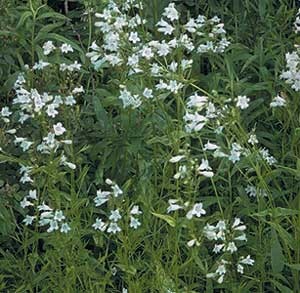Jack in the Pulpit (Arisaema Triphyllum) – Very distinctive spathe (hooded floral leaf) being green or purple brown and often striped, it folds over and shelters the spadix. The flowers are very tiny and actually appear at the base of the spadix. The fruit of this species is every bit as striking as the “flower”; it is a cluster of scarlet berries visible above the woodland floor from a long way off. Jack-in-the-pulpits have both male and female parts, but if the plant is young or weak, only the male parts will be fertile. The female parts are fertile only on older, stronger plants.
The plant resembles a minister in an old fashioned pulpit. Reaches 1 to 3 feet and prefers richly-soiled woods and swamps; found throughout the entire central US and into the east to the Appalachians. It is becoming increasingly rare in some areas. Deer Resistent.
Araceae Family – “Jack-in-the-pulpit, Northern Jack-in-the-pulpit, Small Jack-in-the-pulpit, Swamp Jack-in-the-pulpit, Woodland Jack-in-the-pulpit, Indian Turnip, Green Dragon, Brown Dragon, Dragon Root, Dragonroot, Dragon Plant, Dragon Turnip, March Turnip, Meadow Turnip, Indian Turnip, Wild Turnip, Swamp Turnip, Pepper Turnip, Wild pepper, Starch Plant, Starchwort, Memory Root, American Arum, Thrice-leaved Arum, Devil’s Ear, Priest’s Pintle, Wake-robin, Bog Onion, Cuckoo Plant, Lords and Ladies”.
Arisaema from the Greek aris, a kind of arum and haema, meaning “blood”. Triphyllum is Latin meaning “three leaves”.
Another species that provided a multitude of uses to Native Americans and early settlers, Arisaema triphyllum is probably best remembered as a youthful dare. My first Boy Scout camping trip was highlighted by a challenge to taste the root juice and see if it was sweet or sour. It was, flat out, the hottest, stinging sensation my mouth has ever experienced. In fact, to this day, I still await my revenge on the perpetrator of this “hazing”. (The sensation was caused by the high concentration of calcium oxalate present in the root.)
Some Native Americans used this species to treat sore eyes, others to treat headache with an external application of the powdered root to the temples. It was also used broadly to treat snakebite, ringworm, stomach gas, rheumatism, asthma and many other disorders.
One central Iowa tribe (the Meskwaki) even used it in a form of “guerilla” warfare. Meat would be cooked with the root of Jack-in-the-pulpit, then left along a trail in hopes that their enemies would partake of it. If they did, the high concentration of calcium oxalate would sicken them, with death occasionally resulting.
Edible Uses:
Tuber – it must be thoroughly dried or cooked before being eaten. The roots can be cut into very thin slices and allowed to dry for several months, after which they are eaten like potato chips, crumbled to make a cereal or ground into a cocoa-flavoured powder for making biscuits, cakes etc. They can also be pounded into a powder, this is thern left to dry for several weeks when it becomes safe to use. The root is up to 5cm long and 2cm wide. Caution is advised, see the notes above on toxicity.
Other Uses:
“A starch obtained from the roots is used as a stiffener for clothes. It is very harsh to the hands, causing blisters and swellings. The seeds have been used in rattles.”
To Purchase This Native Wildflower Visit Us At
Native Wildflowers & Seeds from
Ion Exchange, Inc.
“helping you create your own natural beauty”
Hbright@IonXchange.com














